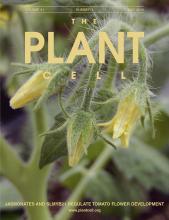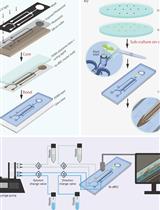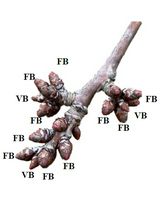- EN - English
- CN - 中文
Cell Wall Compositional Analysis of Rice Culms
水稻茎杆的细胞壁组成分析
发布: 2019年10月20日第9卷第20期 DOI: 10.21769/BioProtoc.3398 浏览次数: 5594
评审: Ali ParsaeimehrJinping ZhaoAnonymous reviewer(s)

相关实验方案

使用气相色谱和火焰离子化检测技术对亚热带乔木作物荔枝(Litchi chinensis Sonn.)叶和芽组织中乙烯产量进行定量分析
Regina B. Cronje and Arnoldus J. Jonker
2023年03月20日 1508 阅读
Abstract
The plant cell wall is a complicated network that is mainly constituted of polysaccharides, such as cellulose, hemicellulose and pectin. Many noncellulosic polysaccharides are further acetylated, which confers these polymers flexible physicochemical properties. Due to the significance of cell wall in plant growth and development, the analytic platform has been the focus for a long time. Here, we use internodes/culms, an important organ to provide mechanical support for rice plants, as an experimental sample to explore the method for cell wall composition analysis. The method includes preparation of cell wall residues, sequential extraction of polysaccharides, and measurement of cellulose. The procedure for acetate examination is also described. This method is applicable to determine the composition of individual cell wall polymers and the modifier acetates, and is suitable to identify cell wall relevant mutants based on the advantages in high throughput, precision and repeatability.
Keywords: Xylan (木聚糖)Background
The plant cell wall represents one of the most complicated cellular structure in nature and is essential for plant growth and adaptations to environments. Besides presenting multiple polysaccharide components and phenolic compounds, acetylation is a prevalent modification on most cell-wall polymers, which alters the physicochemical properties and increases the complexity of cell wall structure. Establishment of the effective analytic platform for cell wall composition is always a challenging task. The previous analytic method often uses alkali to extract cell wall residues, but removes acetate. Recent works have revealed that acetate patterns on xylan determine the folding of this polymer and impact the binding to cellulose or lignin, indicating its importance in cell wall formation and plant growth control (Grantham et al., 2017; Kang et al., 2019; Zhang et al., 2019). The method that can simultaneously examine the composition of diverse cell-wall polysaccharides and their acetyl modifications needs to be developed. It becomes realizable as solvent dimethyl sulfoxide has been found extracting xylan without trimming acetyl esters (Goncalves et al., 2008). Rice culms are representative for cell wall composition methodology analysis because this organ is rich of secondary wall-bearing fiber cells and also contains multiple cell types. In addition to abundant materials, acetylation level varies on different wall polymers and during the culm development. By using rice culms as analytic samples, we developed a protocol for cell wall composition and acetyl modification analyses with some changes from the previous method (Foster et al., 2010). This protocol offers a widely used way to examine the composition of diverse cell wall polymers and determine the acetate content in different rice varieties and other crops.
Materials and Reagents
- 96-well flat bottom assay plate (Greiner bio-one, catalog number: 655180)
- UV capable 96-well flat bottom assay plate (Corning, catalog number: 3635)
- Glass bottle
- Eppendorf tubes (1.5 ml) (Eppendorf, catalog number: 0030120.086)
- Sarstedt tubes 2 ml (Sarstedt, D-51588)
- 50 ml plastic centrifuge tube (Corning CentriStar)
- Glass microfiber filters (Whatman, catalog number: 1820-025)
- Rice mature plants
- Endopolygalacturonase M2 (Megazyme, catalog number: PGALUSP, 4 °C)
- Pectin methyl esterase (Sigma-Aldrich, catalog number: P5400-1KU, −20 °C)
- α-amylase (Megazyme, catalog number: E-BLAAM, 4 °C)
- ddH2O
- Acetatic Acid Assay Kit (Megazyme, catalog number: K-ACET, 4 °C)
- Acetone
- DMSO (Sigma-Aldrich, catalog number: D5879)
- 70% (v/v) aqueous ethanol
- Chloroform/methanol (1:1, v/v) solution
- Updegraff reagent (Acetic acid: nitric acid: water, 8:1:2 v/v)
- 72% Sulfuric acid (Prepared with concentrated Sulfuric acid GR)
- 1 mg/ml glucose stock (Prepared from D-(+)-glucose) (Sigma-Aldrich, catalog number: G8270, −20 °C)
- Anthrone reagent (2 mg/ml Anthrone in concentrated sulfuric acid) (Sigma-Aldrich, catalog number: 319899)
- Trifluoroacetic acid (TFA) (Sigma-Aldrich, catalog number: T6508)
- Ammonium formate (Aldrich, catalog number: 516961)
- 11% peracetic acid solution (prepared from 35% peracetic) (Aladdin, catalog number: P112625)
- Ethanol: methanol: water solution (7:2:1, adjust the pH to 3.0 with HCOOH)
- 1% ammonium oxalate (Sigma-Aldrich, catalog number: 09898)
- 37% hydrogen chloride
- MES/Tris buffer (pH 8.1-8.3) (see Recipes)
- 2 M trifluoroacetic acid (see Recipes)
- 1 N sodium hydroxide (see Recipes)
- 1 N hydrogen chloride (see Recipes)
- 50 mM ammonium formate (pH 4.5) (see Recipes)
Equipment
- Freeze dryer (Beijing Songyuanhuaxing Technology Develop Co. Ltd., model: LGJ-12)
- Ball mill (QIAGEN, TissueLyser II, catalog number: 85300)
- (Optional) Vortex shaker
- Basket centrifuge (Eppendorf, model: 5810R)
- Centrifuge (Eppendorf, model: 5430) (to fit Eppendorf 1.5 ml tubes)
- Thermomixer comfort (Eppendorf)
- Dri-Block heaters (Techne, model: DB200/3)
- Microplate reader (PerkinElmer, Enspire)
- Concentrator (Eppendorf, concentrator plus)
- (Optional) Drying oven
- (Optional) Shaking incubator
- Sieves (Mesh size of 0.15 mm)
- pH meter (Mettler Toledo)
- Semi-micro scales (dual resolutions starting at 0.01 mg)
Procedure
文章信息
版权信息
© 2019 The Authors; exclusive licensee Bio-protocol LLC.
如何引用
Zhang, L., Zhang, B. and Zhou, Y. (2019). Cell Wall Compositional Analysis of Rice Culms. Bio-protocol 9(20): e3398. DOI: 10.21769/BioProtoc.3398.
分类
植物科学 > 植物生理学 > 植物生长
发育生物学 > 细胞生长和命运决定 > 细胞壁
细胞生物学 > 细胞结构 > 细胞壁
您对这篇实验方法有问题吗?
在此处发布您的问题,我们将邀请本文作者来回答。同时,我们会将您的问题发布到Bio-protocol Exchange,以便寻求社区成员的帮助。
Share
Bluesky
X
Copy link










